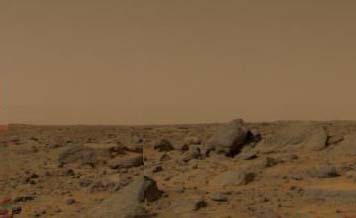
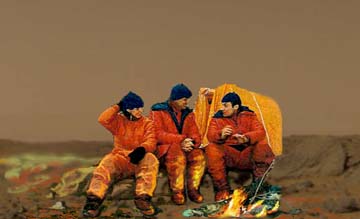
"Since in the long run, every planetary society will be endangered by impacts from space, every surviving civilisation is obliged to become space faring - not because of exploratory or romantic zeal, but for the most practical reason imaginable: staying alive."
(C.Sagan)
A new era of Mars exploration has begun in the 1990s with a series of orbiters, landers, and rovers, with a sample return planned for 2005.
The success of Mars Pathfinder and the approaching launch of the first component of the International Space Station have increased public interest in the future goal of human exploration of Mars. NASA has taken the first steps to define a Human Exploration and Development of Space initiative. Recent studies at the NASA Johnson Space Center, the Jet Propulsion Laboratory, and RKK Energia are leading to new ideas and technology to make the goal more practical. Although the challenge to reduce costs is formidable, the US, Europe, Japan, and Russia are all developing robotic Mars missions. Incorporating these into human mission plans is a challenge and an opportunity. New technology, new mission designs, and international cooperation will be needed to make human exploration of Mars affordable for space agencies, which face declining or level budgets.
The international workshop is by invitation only, but seeks a broad representation of program leaders, engineers, and scientists who are contributing to the definition of human exploration beyond low earth orbit. With one day reserved for technical visits to space facilities, the three-day workshop agenda will focus on:
-
Why should any nation or nations mount a Human Expedition to Mars? This crucial question, the first question that must be dealt with, will be discussed in both a public session, with leading public figures taking part, and a session for Workshop participants. Specific consideration will be given to public and political rationales in the US, Russia, Europe, and Japan and to international cooperation.
Mission definition, including: rationale, cultural and social aspects, requirements, participants, goals and objectives, international cooperation, science, connection with the robotic program, the value of precursor human missions (to the Moon or a near-Earth asteroid) or other interim milestones, and medical-biological problems.
Mission design: leading scenarios, international roles, launch vehicles, requirements for support from the space station and from robotic programs, science and technical precursors, spacecraft design, and surface exploration strategies.
Technologies: propulsion (including in-situ production), miniaturized technology, mix of robotic and human systems, telerobotics, life support, and Mars base operation.
Discussion: plenary sessions and workshop sessions to discuss ideas, technical approaches, and program considerations.
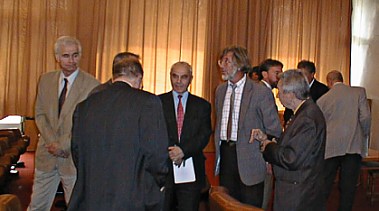
September 14, Space Research Institute
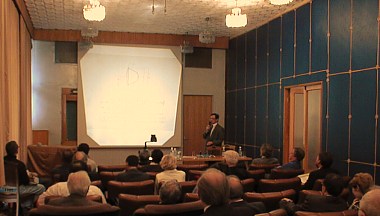
September 15, Afternoon Session, Space Research Institute
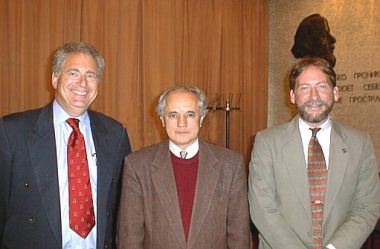
Dr. L.Friedman, Prof. A.Galeev, Dr. D.Cooke
September 16, Space Research Institute